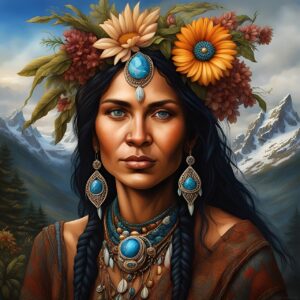 Exploring the Rich Tapestry of India’s Indigenous Heritage: 10 Amazing Facts about Indian Tribes
Exploring the Rich Tapestry of India’s Indigenous Heritage: 10 Amazing Facts about Indian Tribes
Introduction:
India, a land of diverse cultures and traditions, boasts a tapestry woven with the threads of numerous indigenous tribes. These communities, often living in harmony with nature, contribute significantly to the country’s cultural mosaic. In this article, we delve into the fascinating world of Indian tribes, uncovering 10 amazing facts that showcase their unique heritage.
Diversity in Unity:
India is home to over 700 tribal groups, each with its distinct language, customs, and traditions. Despite the diversity, there exists a remarkable unity in their connection to the land and a shared ethos of sustainable living. From the Gonds of central India to the Bodos of the northeast, the tribal communities form an integral part of India’s social fabric.
Living in Harmony with Nature:
Many Indian tribes have retained their traditional ecological knowledge, practicing sustainable agriculture and living in harmony with nature. The Warli tribe, for instance, follows an eco-friendly lifestyle, utilizing natural materials for their art and maintaining a balanced relationship with the environment. Such practices offer valuable lessons in conservation and sustainability.
Artistic Expressions:
Indian tribal communities are renowned for their vibrant and unique art forms. The Bhils, an indigenous group from western India, are celebrated for their Pithora paintings that depict scenes from daily life, rituals, and nature. These art forms not only preserve the cultural heritage but also serve as a means of economic sustenance for the tribes.
Traditional Medicinal Wisdom:
The tribal communities in India often possess extensive knowledge of traditional medicine, using indigenous plants for healing purposes. The Kani tribe of Kerala, for instance, relies on the vast biodiversity of the Western Ghats for their medicinal needs. This knowledge, passed down through generations, highlights the importance of preserving not only the natural environment but also the associated indigenous wisdom.
Distinctive Languages and Dialects:
The linguistic diversity among Indian tribes is staggering, with many communities having their own languages and dialects. The Adi tribe of Arunachal Pradesh, for example, boasts a rich linguistic heritage with several dialects spoken within the community. Language serves as a crucial marker of tribal identity, reinforcing the cultural uniqueness of each group.
Celebration of Cultural Festivals:
Tribal festivals are vibrant celebrations that showcase the rich cultural heritage of these communities. The Hornbill Festival of the Naga tribes in Nagaland is a prime example. This annual event brings together various Naga tribes, providing a platform to display their traditional dances, crafts, and culinary delights. Such festivals foster a sense of community and pride in tribal identity.
Matriarchal Societies:
Some Indian tribes, such as the Khasi and Garo tribes in Meghalaya, follow matriarchal social structures. In these societies, women often play central roles in decision-making, inheritance, and community affairs. This unique aspect challenges conventional gender norms and offers insights into alternative social structures that prioritize equality.
Sacred Groves and Conservation Practices:
Many Indian tribes hold certain natural areas, known as sacred groves, in high regard. These groves are protected spaces with cultural and religious significance, serving as havens for biodiversity. The Bishnoi tribe in Rajasthan, for instance, is known for its conservation efforts, including the protection of wildlife and sacred trees, showcasing the integral link between spirituality and environmental stewardship.
Traditional Music and Dance:
Music and dance are integral components of tribal culture, with each community having its distinctive forms. The Santhals, a tribal group in eastern India, are renowned for their traditional dance, music, and festivals. These art forms not only serve as modes of expression but also play vital roles in preserving and passing on tribal narratives and history.
Challenges and Resilience:
Despite their rich cultural heritage, many Indian tribes face numerous challenges, including displacement, loss of land, and economic marginalization. However, these communities display remarkable resilience in the face of adversity. Initiatives focusing on tribal rights, education, and sustainable development are crucial in ensuring the preservation of their unique heritage for future generations.
Conclusion:
Exploring the world of Indian tribes reveals a tapestry of diversity, resilience, and cultural richness. From their sustainable practices to vibrant art forms and unique social structures, these communities contribute significantly to India’s cultural landscape. Recognizing and respecting the heritage of Indian tribes is not only a matter of cultural preservation but also an essential step toward building a more inclusive and harmonious society.